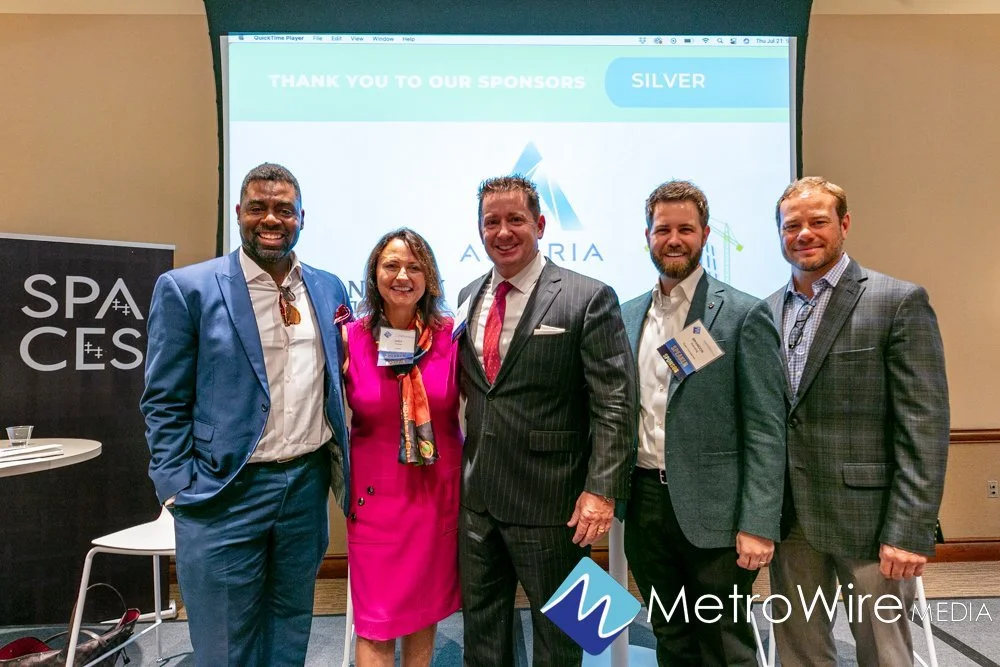“People are wanting to get out. They’re wanting to see each other,” said Jody House, first vice president, CBRE.
House was joined by panelists Brandon Brensing, vice president of real estate development, Ryan Companies US, Inc.; Jason Carter-Solomon, senior vice president, commercial banking and real estate, Landmark National Bank;, and Rob Welker, president and partner, Hoefer Welker, at MetroWire Media’s 2022 KC Mixed-Use + Retail Summit. Chad Stafford, president, Occidental Management, Inc., moderated the event held at Occidental’s Aspiria campus.
Panelists agreed in order to get employees back into the office and to retain them, their workplace needs to be a place where employees want to go to work.
“It’s not just about space. It’s more about what we’re doing to attract those employees to a location. So when you take that into context, what I think we’re really thinking about going forward - and where I think it mixes with mixed-use really well - is creating these places we’re calling third places,” Brensing said.
The Urban Land Institute describes third places as the places beyond homes and workplaces where people have opportunities to connect with others. These places, important parts of a community, are privately-owned spaces where people come together and in which small, daily spontaneous or planned interactions occur.
Brensing said these third places are places where you don’t live, but they provide an attraction that creates an emotional feeling within real estate.
“[Employees] want to have either an aspiration or some type of a gut feeling that makes them want to go to that location,” said Brensing.
“As I’ve talked to folks that are running companies and looking to locate their companies and how to attract talent, the thing that commonly comes up is what amenities are co-located nearby,” said Carter-Solomon.
“I think allowing for a diverse array of uses within a neighborhood comes into play with creating an authentic sense of place. And that is more of a municipal discussion but also a land use discussion. . . . It is pushing the envelope with municipalities to allow for uses that they may not be able to see but that may be valuable and create vibrancy within communities and get buy-in and bring them along,” he said.
Brensing said the top three amenities that businesses want to incorporate to attract employees are fitness facilities, conference centers and tenant lounges; followed closely by nearby amenities such as retail, food outlets and medical offices, the “daily habit things”.
Green space also is important. Welker said tenants will spend money for the outside, whether it’s an outdoor activity space where people can take their laptops or opening up more glass views to bring the green space inside.
Welker said stand-alone, single-use office buildings are in serious trouble.
“I don’t think office by itself can survive because people inside those buildings want more,” said Welker.
Stafford said he has seen a lot more thoughtfulness with dealmaking. He said tenants now are not concerned just about the economic factors like the amount of tenant improvement allowance or the rent, but rather more about the experience and the amenities. And, this is lengthening the time it takes to get deals done.
“Deals are hard, but there are tons of opportunities,” said Welker.
Welker said he anticipates that there will be more deals coming to the market, but they will be harder to work because of a shortage of staffing to handle all the deal flow.
House said there is concern about supply chain delays which impact project management.
“I think project management today with teams is more important than ever to make the critical dates, to get things open, to get things staffed and have it go really seamless. And we've been seeing a little bit of the bumps in the road with that post pandemic,” said House.
The panelists agreed that incentives are crucial for mixed use projects. Welker said developers cannot pencil deals without them.
“[Incentives] bring development, which brings new residents to the community and it does develop a bigger tax base in the future,” said Welker.
Carter-Solomon said municipalities need to make the impact of incentives felt in a more broad base and equitable manner.
“And what that looks like is frankly incentivizing smaller deals and taking smaller risks with more local people so that we get some cyclical nature of the return of capital and also hold folks accountable in a much more measurable way,” said Carter-Solomon.
Carter-Solomon said to create vibrancy, there needs to be incentivized measures to reduce lease rates for small retail business tenants.
“[H]ow many mixed-use buildings do you see with vacant retail tenants on the first floor? Oftentimes, it’s because the retail triple nets are too costly for the bulk of entrepreneurial small businesses to come and take that burden on,” he said.
Carter-Solomon said he does not fear an impending recession for the Kansas City region.
“So with perspective, what's changed and why I’m not afraid is because I think there is more innovation around both deal making and capital allocation and creative capital financing opportunities in this marketplace as people see what a good investment Kansas City is,” he said.
————————————————————————
Feature photo : Panelists included (Left to Right): Jason Carter-Solomon, Jody House, Rob Welker, Brandon Brensing and moderator, Chad Stafford. Photo credit: Arch Photo KC.

